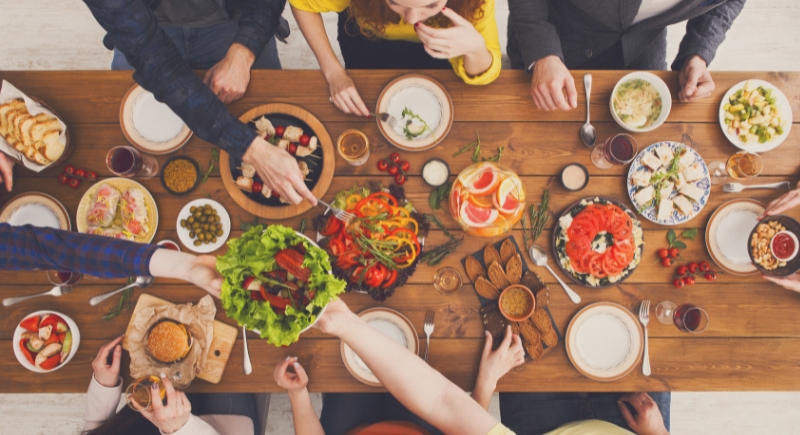Etiquette Experts Explain Why Eating With Elbows on the Table Is Considered Rude
Etiquette experts explain that the rule against keeping elbows on the table has deeper roots than people realize. While many families, schools, and restaurants repeat it out of habit, the guideline was originally developed from specific social expectations related to safety, personal space, and respectful conduct at shared tables. These origins continue to shape how etiquette specialists interpret the rule today and why it still appears in modern dining advice.
How A Table Became A Territory Line

Image via Getty Images/Prostock-Studio
Centuries ago, shared meals packed diners close together. Banquets in medieval halls often featured long boards and benches, with food set in the center. Leaning in with elbows could bump dishes or disrupt the person beside you. Social order shaped behavior at the table, and keeping arms close respected the space available to each diner.
Another historical explanation suggests that early banquet tables sometimes rested on temporary trestles that shifted under weight. Leaning on them risked spills, noise, or collapse, so discouraging elbows was a practical precaution during meals.
Why Manners Attached Meaning To Elbows
As dining customs evolved, the placement of elbows took on social meaning. Reaching into another person’s space appeared assertive and interrupted the rhythm of a shared meal. Table manners encouraged restraint and awareness, and keeping elbows away aligned with expectations for polite behavior.
Later etiquette guides connected the placement with posture. Slouching at the table signaled inattentiveness in formal dining, while sitting upright matched standards for composed table presence.
In the nineteenth century, etiquette writing even applied separate standards to women by treating exposed elbows or casual posture as improper in polite society.
When Modern Experts Say It Still Matters

Image via Getty Images/ciricvelibor
Current etiquette guidance focuses on setting and company. Formal dinners, business meals, and gatherings with unfamiliar guests favor keeping hands off the table during courses. Space around plates and glasses becomes limited, and maintaining that space signals consideration for others. It also supports a steady posture and avoids crowding.
Meals with family or close friends allow more flexibility. Some etiquette authorities have noted that placing elbows on the table between courses or during relaxed conversation is acceptable in informal settings.
A Cue In The Rule
The persistence of this guideline shows how small habits can significantly affect comfort at the table. A guest who takes up too much space can appear unaware of others, even unintentionally. Avoiding that impression makes interaction smoother, which likely explains why reminders continue in many households.
Cultural variation also influences the extent to which the rule applies. Some countries consider it poor manners to keep elbows on the table, while others regard it as normal. Etiquette usually develops through tradition rather than universal agreement.
More than the placement of arms, the rule reflects a long history of shared meals and social coordination.